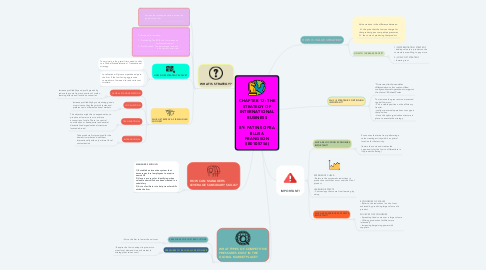
1. WHY IS STRATEGIC POSITIONING IMPORTANT?
1.1. "Firms need to choose either differentiation or low cost and then configure internal operations to support the choice"- Michael Porter
1.2. To maximize long run return on invested capital firm must: - Pick a viable position on the efficiency frontier -configure internal operations to support that position - Have the right organization structure in place to execute the strategy.
2. WHAT IS STRATEGY?
2.1. Actions that managers take to attain the goals of the firm
2.2. Firms need to increase:- 1) Profitability:The ROR the firm makes on its invested capital 2) Profit Growth: The percentage increase in net profits over time
2.3. HOW DOES STRATEGY EVOLVE?
2.3.1. To survive in a long term firms need to shift to a Global Standardization / Transnational strategy.
2.3.2. Localization will give competitive edge to the firm. If the firm facing aggressive competitors, firm need to reduce its cost structure.
2.4. WHICH STRATEGY A FIRM SHOULD CHOOSE?
2.4.1. GLOBAL STANDARDIZATION
2.4.1.1. Increase profitability and profit growth by reduce the costs from economies of scales, learning effects and location economies.
2.4.2. LOCALIZATION
2.4.2.1. Increase profitability by customizing goods or services so that they match tastes and preferences in different national markets
2.4.3. TRANSNATIONAL
2.4.3.1. The objective might be to expand sales, to produce at lower cost or to achieve economies of scale. There is a central coordination or headquarter and several decentralized organizational structures located abroad.
2.4.4. INTERNATIONAL
2.4.4.1. Take products first produced for the domestic market and sell them internationally with only minimal local customization
3. IMPORTANT!
3.1. WHY ARE LOCATION ECONOMIES IMPORTANT?
3.1.1. Economies that arise from performing a value creating activity within a optimal location for that activity. (lowers the costs and creates the opportunity for the firm to differentiate in its products offering)
3.2. EXPERIENCE CURVE: - Refers to the systematic reductions in production costs that occur over the life of product LEARNING EFFECTS - Cost savings that come from learning by doing
3.3. WHY ARE EXPERIENCES EFFECTS IMPORTANT?
3.3.1. ECONOMIES OF SCALES - Refer to the reductions in unit of cost achieved by producing large volume of a product SOURCES OF ECONOMIES - Spreading fixed costs over a large volume - Utilizing production facilities more intensively - Increasing bargaining power with suppliers
4. HOW CAN MANAGERS LEVERAGE SUBSIDIARY SKILLS?
4.1. MANAGERS SHOULD: 1) Establish an incentive system that encourages local employees to acquire new skills 2) Have a process for identifying when valuable new skills have been created in a subsidiary 3) Act as facilitators to help transfer skills within the firm
5. WHAT TYPES OF COMPETITIVE PRESSURES EXIST IN THE GLOBAL MARKETPLACE?
5.1. PRESSURES FOR COST REDCUTIONS
5.1.1. - Force the firm to lower the unit cost
5.2. PRESSURES TO BE LOCALLY RESPONSIVE
5.2.1. - Require the firm to adapt its product to meet local demands in each market (a strategy that raises cost)
6. HOW IS VALUE CREATED?
6.1. Value creation is the difference between: V= the price that the firm can charge for that product given competitive pressures C= the costs of producing that product
6.2. HOW TO INCREASE PROFIT?
6.2.1. 1) DIFFERENTIATION STRATEGY - adding value to a product so the customers are willing to pay more 2) LOW COST STRATEGY - lowering cost
